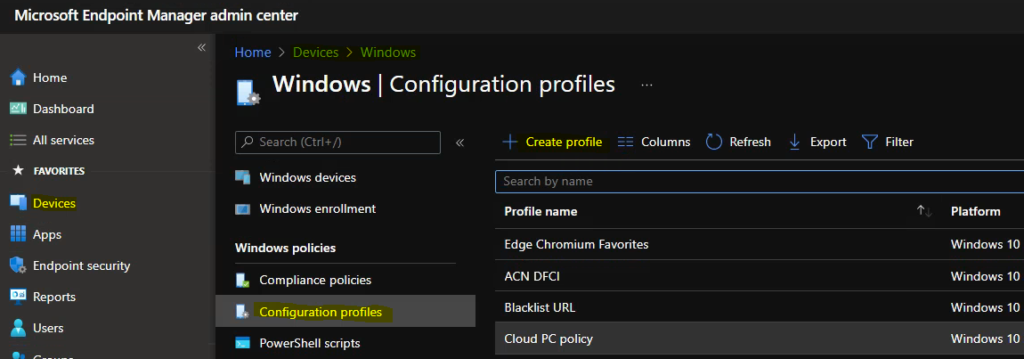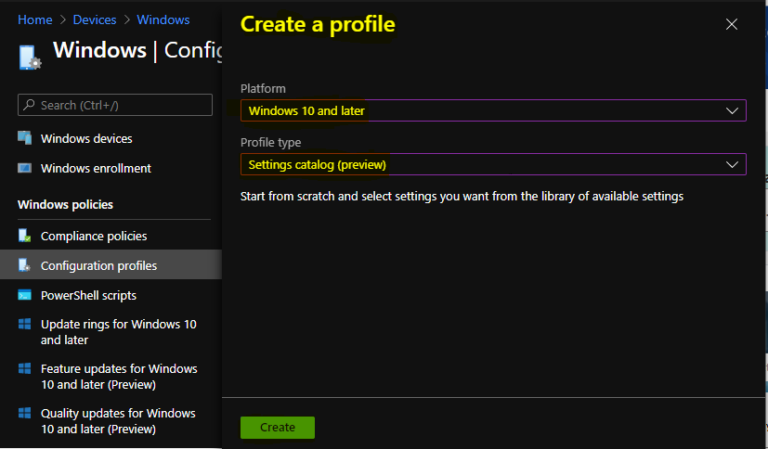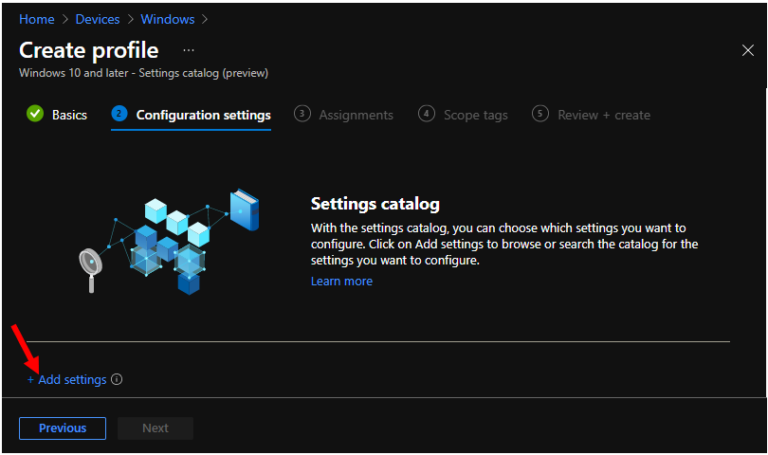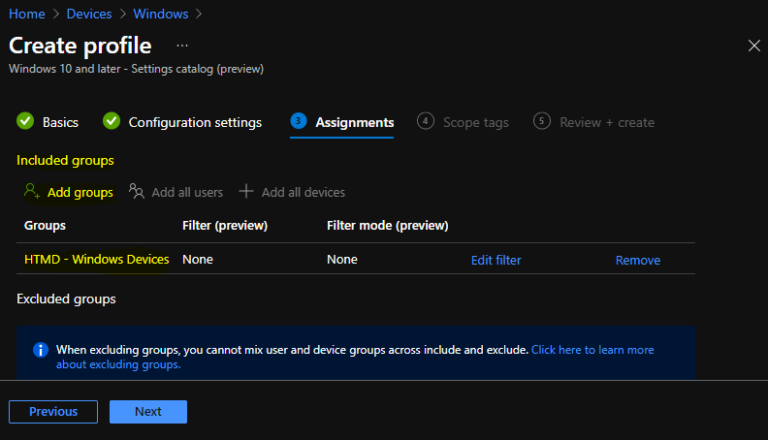Let’s see how to control running background windows apps using Intune, aka, Endpoint Manager. The unnecessary apps running in the background can drain battery, consume bandwidth and system resources. If keeping apps updated is not important for you, you can easily control which apps can run in the background.
In Windows devices, you can use apps that continue to perform actions even when you are not actively in the app’s window. These are commonly called background apps. These apps will continue to run in the background, which can receive additional info, send notifications, and stay up-to-date, even when you’re not using them. Turning background apps off can help conserve power.
Microsoft recommends setting catalog profiles to create and manage security policies for all Intune managed Windows devices. The Intune Settings Catalog is the best place to go for all the policy settings in Intune (MEM). In the settings catalog profile, you will also get an option Duplicate to create a copy of an existing setting catalog profile.
- Collect Intune Logs from MEM Portal Diagnostic Data
- Intune Logs Event IDs IME Logs Details For Windows Client Side Troubleshooting
- Intune Policy Tattooed or Not Tattooed Windows CSP Policy
How to Control Running Background Windows Apps Using Intune
Let’s follow the step below to control the app run in the background using Intune –
- Sign in to the Endpoint Manager Intune portal https://endpoint.microsoft.com/
- Select Devices > Windows > Configuration profiles > Create profile

In Create Profile, Select Platform, Windows 10, and later and Profile, Select Profile Type as Settings catalog. Click on Create button.

On the Basics tab, enter a descriptive name, such as Control Running Background Windows Apps. Optionally, enter a Description for the policy, then select Next.

In Configuration settings, click Add settings to browse or search the catalog for the settings you want to configure.

On the Settings Picker windows, Select Privacy to see all the settings in this category. For Example – I selected the below four settings. After adding your settings, click the cross mark at the right-hand corner to close the settings picker.
The below table lists all the available options that you can configure to control apps run in the background using Intune –
- Let Apps Run In Background –This policy setting specifies whether Windows apps can run in the background.
- Force Allow These Apps to Run in Background – List of semi-colon delimited Package Family Names of Windows apps. Listed Windows apps are allowed to run in the background. This setting overrides the default LetAppsRunInBackground policy setting for the specified Windows apps.
- Let Apps Run In Background Force Deny These Apps – List of semi-colon delimited Package Family Names of Windows apps. Listed Windows apps are not allowed to run in the background. This setting overrides the default LetAppsRunInBackground policy setting for the specified Windows apps.
- Let Apps Run In Background User In Control Of These Apps – List of semi-colon delimited Package Family Names of Windows apps. The user is able to control the background apps privacy setting for the listed Windows apps. This setting overrides the default LetAppsRunInBackground policy setting for the specified Windows apps.

You can specify either a default setting for all apps or a per-app setting by specifying a Package Family Name. You can get the Package Family Name for an app by using the Get-AppPackage Windows PowerShell cmdlet. A per-app setting overrides the default setting

Here you can see the package family name for apps to be added in allow or deny lists based on the requirements. Similarly, you can add more by clicking +Add. And click Next to continue.
The following available options for Let Apps Run In Background –
- If you choose the “User is in control” option, employees in your organization can decide whether Windows apps can run in the background by using Settings > Privacy on the device.
- “Force Allow” option, Windows apps are allowed to run in the background and employees in your organization cannot change it.
- “Force Deny” option, Windows apps are not allowed to run in the background and employees in your organization cannot change it.

Under Assignments, In Included groups, click Add groups and then choose Select groups to include one or more groups. Click Next to continue.

In Scope tags, you can assign a tag to filter the profile to specific IT groups. Add scope tags (if required) and click Next.
In Review + create, review your settings. When you select Create, your changes are saved, and the profile is assigned.

A notification will appear automatically in the top right-hand corner with a message. Here you can see that Policy “Control Running Background Windows Apps” created successfully. The policy is also shown in the Configuration profiles list.

Your groups will receive your profile settings when the devices check-in with the Intune service. Once the policy applies to the devices, you can confirm Open Settings, Click on Privacy and Click on Background apps.
You can check Intune settings catalog profile report from Intune Portal, which provides an overall view of device configuration policies deployment status.
Author
About Author -> Jitesh has over 5 years of working experience in the IT Industry. He writes and shares his experiences related to Microsoft device management technologies and IT Infrastructure management. His primary focus area is Windows 10, Windows 11 Deployment solution with Configuration Manager, Microsoft Deployment Toolkit (MDT), and Microsoft Intune.
